Farewell to the Audi R8, the Supercar That Pretended to Be a Sports Car
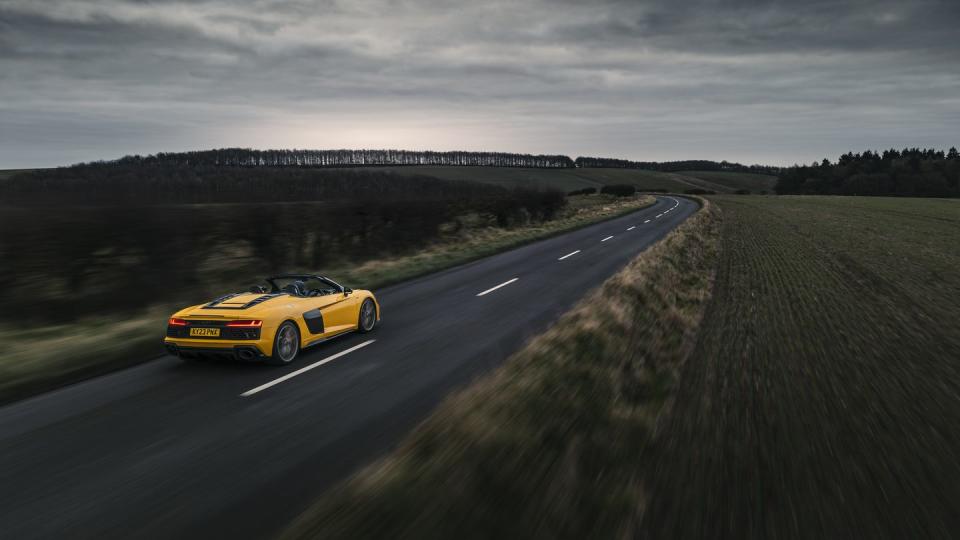
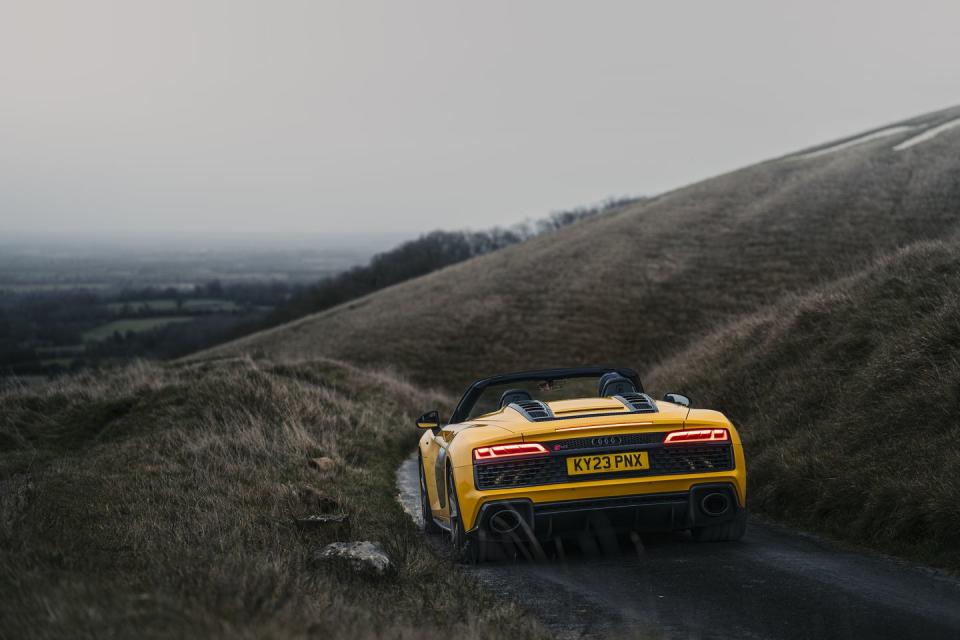
The Audi R8 was a car that packed many surprises into its long lifespan and two generations. It saved one for the very end; a late spike in demand saw Audi keep it in production for several months after it had planned to retire it. The final example rolled out of the Heilbronn plant this month. Proof of the continued appeal of a car that defied easy categorization - the sports car with the soul of a supercar.
Not just the soul, but the heart and guts as well. The original R8 was closely related to the Lamborghini Gallardo of the same era, but the second-gen R8 was pretty much a J-car sister to the Lamborghini Huracan, the two cars sharing the same base V-10 engine, transmission, most suspension components and a significant percentage of their underbody structures. The Lamborghinis were always louder and lairier and more expensive, with the Audis playing the buttoned-down alter ego. But like Clark Kent, the R8’s ordinary act wasn’t fooling anybody.
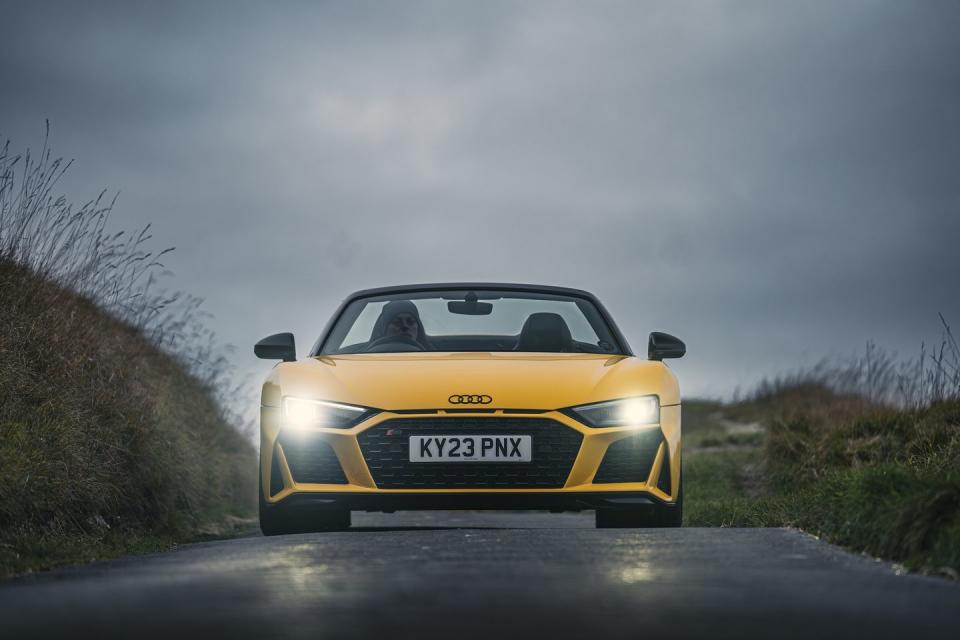
The original R8 was also the result of Audi’s huge success at the turn of the century, a range-topping halo for a brand enjoying booming sales. Audi had left the Nineties dead last among the German automakers selling in the States, its reputation trashed by the accusations the 5000 sedan suffered from unintended acceleration. By the end of the decade, Audi had reinvented itself as a technical leader, pioneering aluminum construction and offering quattro all-wheel drive pretty much across the board. At the same time the brand moved into endurance racing, dominating the World Endurance Championship and more especially the Le Mans 24 Hours, taking no fewer than 13 victories between 2000 and 2014.
The R8 wasn’t related to any of Audi’s endurance racers, one of which was also called the R8, but the road-going car’s design and mid-engined layout were intended to celebrate the connection. (Audi did later offer a GT3 version of both generations of the R8, too.) The first-generation R8 launched as a coupe with a single engine option, a direct-injection 4.2-liter V-8 that was basically a dry-sumped version of the RS4’s powerplant. All-wheel drive was standard, but Audi did offer the choice of both a manual gearbox - with a magnificent open shift gate - and an automated single-clutch transmission.
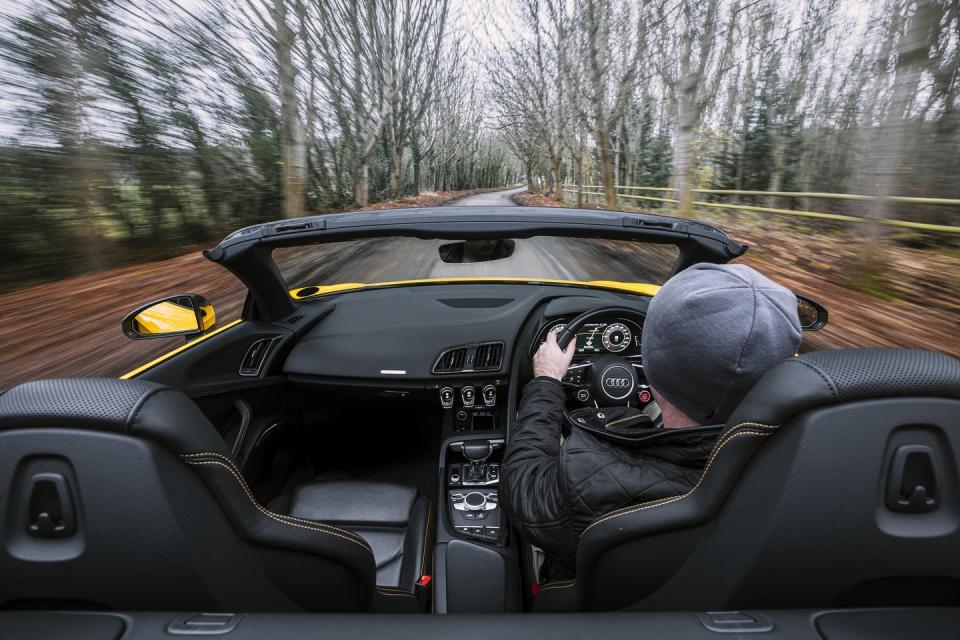
I attended the original R8 press launch in Las Vegas in early 2007, where the car demonstrated the split identity it would keep for most of the rest of its life, that of being both savagely fast and surprisingly gentle. The V-8 was spectacular when extended, the rear-biased torque delivery of the Quattro system pretty much eliminating understeer, but the ability to send drive forwards meant it didn’t feel snappy when pushed. Yet the ride was also very pliant for something so potent, cruising refinement similarly impressive.
Another cause for early comment was how much of the R8’s cabin architecture and switchgear came from cheaper Audis—like heating controls that were directly shared with the second-gen TT. Talking to executives proved this was entirely intentional, the idea being that the R8 feels obviously related to the rest of the clan and not an expensive exotic. I was also told that there were no plans to build a rear-driven version - fate would ultimately overtake that promise - given the importance of Quattro-branded all-wheel drive to Audi’s marketing at the time.
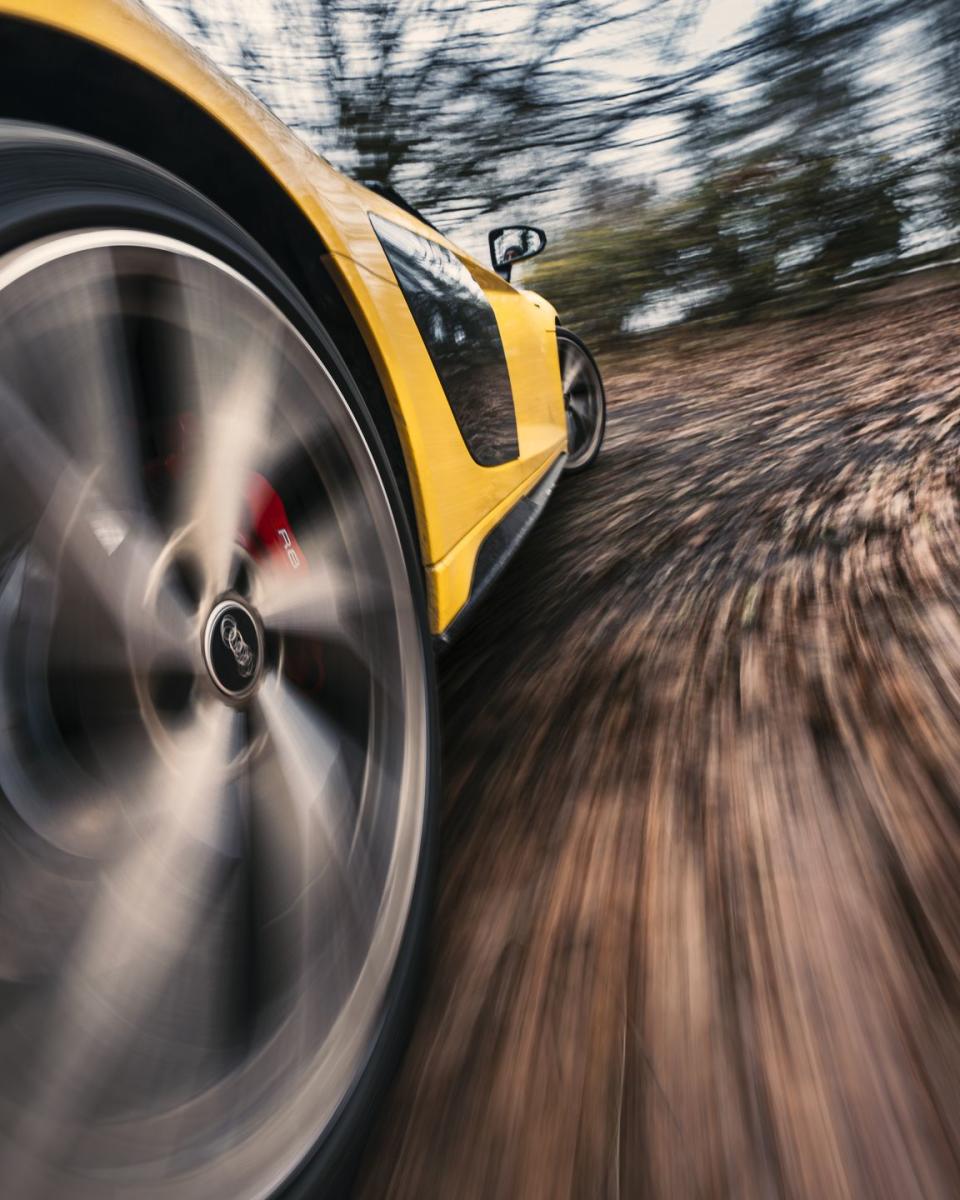
The R8 range soon filled out with the offer of the 5.2-liter V-10 from the Lamborghini Gallardo in 2009, and then an open-topped Spider version in 2010. The V-10 was turned down slightly, making 542 hp to the contemporary Lambo’s 552 hp, but it still put the R8 into a different performance league. There was also the chance to specify the V-10 with the manual transmission option, a combination that felt like a guaranteed future classic even when being experienced for the first time. A facelift in 2012 also replaced the snappy automated single-clutch gearbox with a slicker and smarter double-clutcher.
It took a pair of limited-run specials to show how far the basic R8 could be taken. The R8 GT was a lighter and more powerful version of the V-10 that was introduced in 2012 with 552 hp and 220 lbs carved from its curbweight. An open Spyder version followed the following year. Then, just before retirement, the first R8 Competition was created, the most powerful road car that Audi had created up to that point, with a 562hp V-10 which matched the power output of the contemporary Lamborghini Gallardo LP570-4.
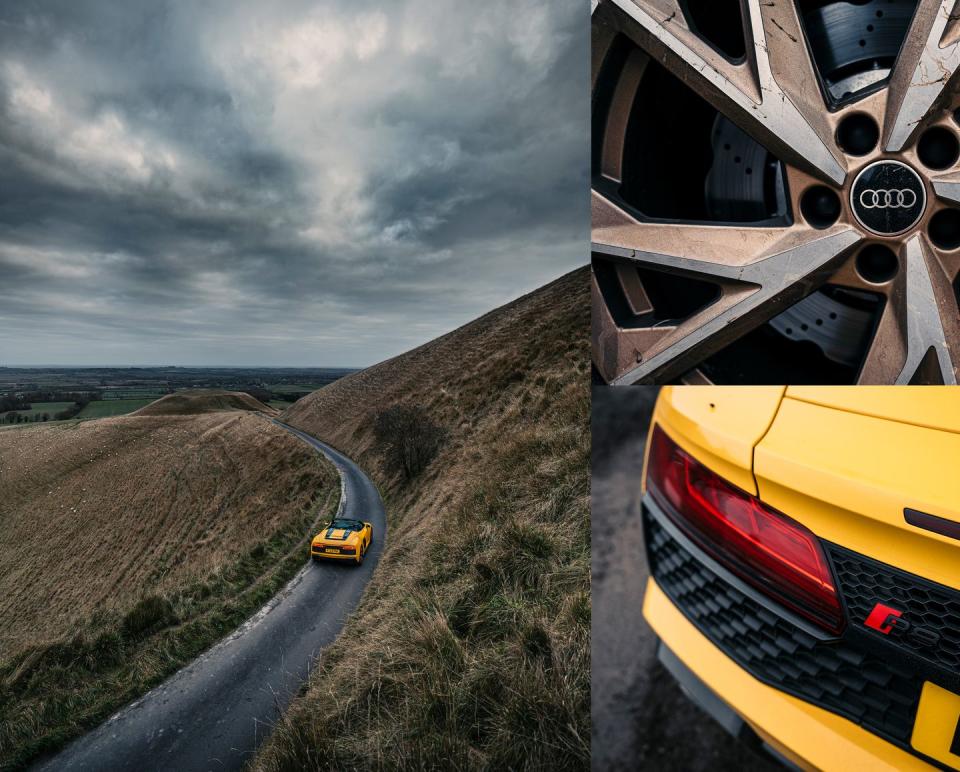
After the love for the original R8, the second generation, often known by its 4S design code – launched in 2015 – felt like a step back in terms of experience, if not performance. The V8 option had gone, as had the manual transmission. Powertrain choice was between the regular 533hp V-10 and the 602hp V-10 Plus. Audi engineers also disclosed plans to create an entry-level twin-turbo V-6 version, which never happened, nor did the on-off plans to make a limited run of the fully electric R8 e-tron.
Beneath the skin the new R8’s relationship with its Lamborghini sibling had grown much closer, but both brands seemed to have been working to a brief to move the characters of their respective models further apart. The Lamborghini was darty and loud and aggressive, the Audi almost too quiet and sensible at everyday speeds; it even had a Comfort dynamic mode.
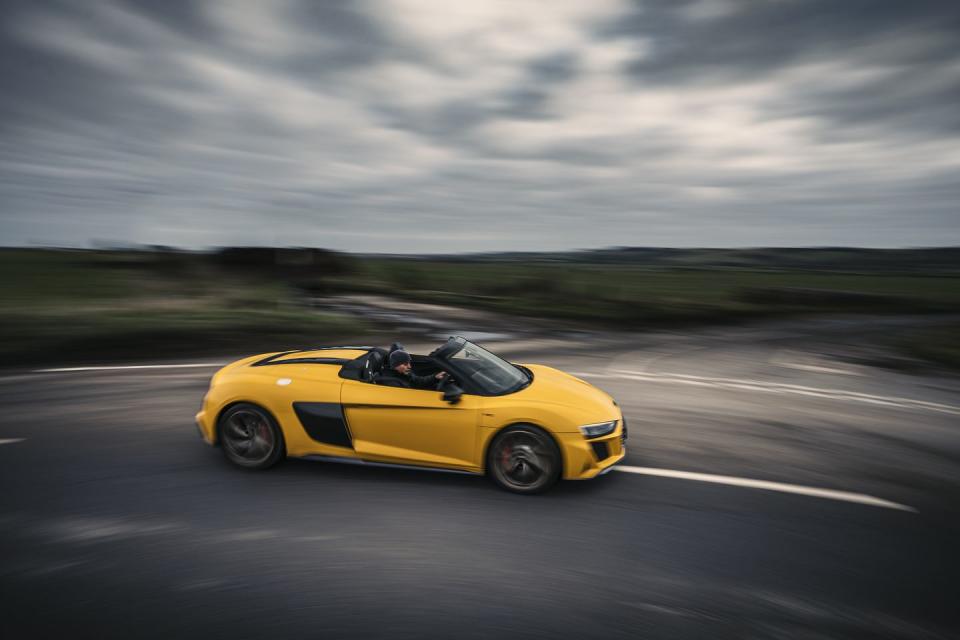
The second R8 was savagely fast, the Plus version being the first Audi with an official top speed of more than 200 mph. It had numerous technical upgrades over the original car, including with a new electronically controlled clutch pack to split torque between its axles, this being much faster to react than its predecessor’s viscous coupling. But it had definitely grown more aloof, with higher and less approachable limits and electric power steering which muted messages that would have been passed uncorrupted by its predecessor’s hydraulic system, especially with the optional variable-ratio rack.
The second R8 grew better when Audi started to remove features. The first of these was a surprise – Audi following Lamborghini’s move with the Huracan LP580-2 and foregoing the dynamic security of all-wheel drive for the edgier thrills of a single-powered axle. The limited edition rear-driven R8 RWS from 2017 used the 533 hp engine and lost the Quattro’s seemingly unbeatable traction, but was 110 lbs lighter and appreciably more agile. After a mild facelift in 2018 the rear-driver became a permanent part of the line-up. Then, as the end approached, Audi replaced this with the 562 hp RWD Performance in 2022 and turned the range into a pair of binary choices: Quattro or rear-drive and coupe or spider. There was also another farewell limited-run R8 GT, but this time with rear-wheel drive.
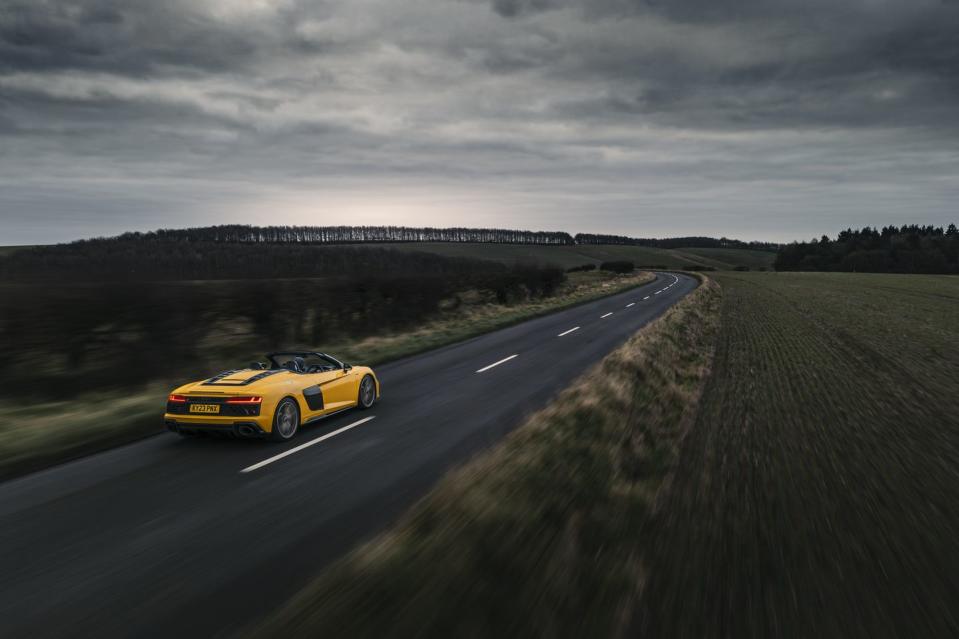
This brings us to our valedictory drive in a U.K.-spec R8 RWD Performance Spyder in a shade of look-at-me yellow chosen for maximum visual impact, and which also starred in our feature on Europe’s most complicated roundabout. But even with the steering wheel on the wrong side, and driven on tight-fitting English country lanes, there were plenty of reminders of the qualities that made the R8 both special and unique.
While coupes are generally held superior to roadsters for driving dynamics, the R8 Spyder has always been an entirely forgivable indulgence thanks to the greater ability it gives to appreciate the soundtrack of the V-10. Even in a European car, one with its voice softened slightly by wearing gasoline particulate filters, this remains spectacular. Unlike the closely related Huracan, the R8 isn’t shouty all the time - indeed it is positively muted when cruising. But adding throttle or engine speed turns it hard-edged and savage, and it loves to rev in a way that punchier turbo engines just don’t. The R8’s 8700 rpm redline is a target rather than a limitation.
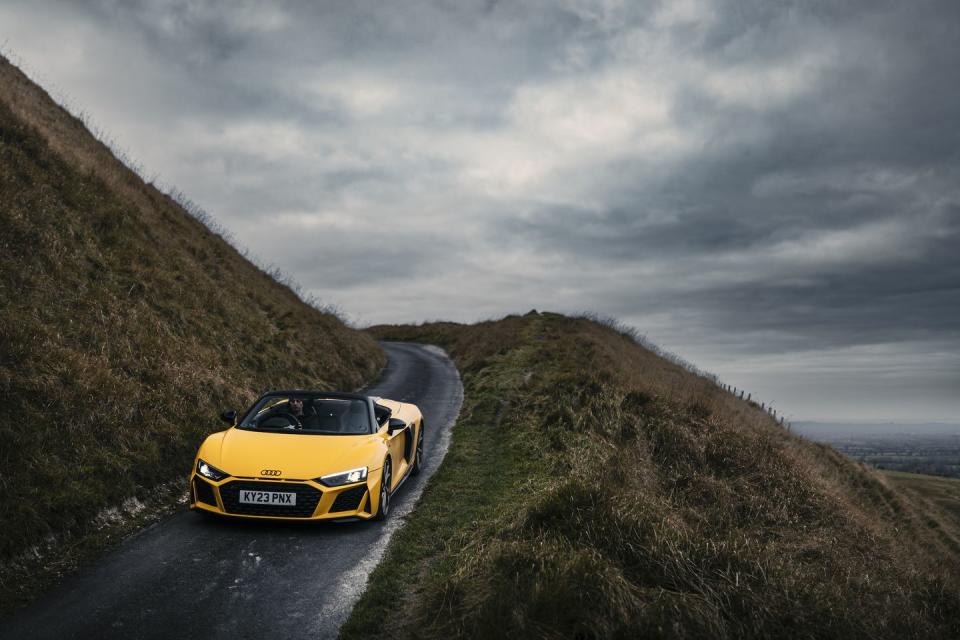
Nor does the lack of traction in this rear-driven version feel like an imposition given the benign balance of the R8’s chassis - traction is limited, especially on cold, greasy British asphalt, but it fades progressively. An R8 Quattro would undoubtedly been quicker, but it wouldn’t have been more fun.
Steering remains the second-gen R8’s weakest dynamic link. Responses are crisp and linear, but little sensation from the road reaches the steering wheel. Rivals like Porsche have proved it is possible to create electric power steering systems capable of genuine communication, Audi never quite got there with the R8.
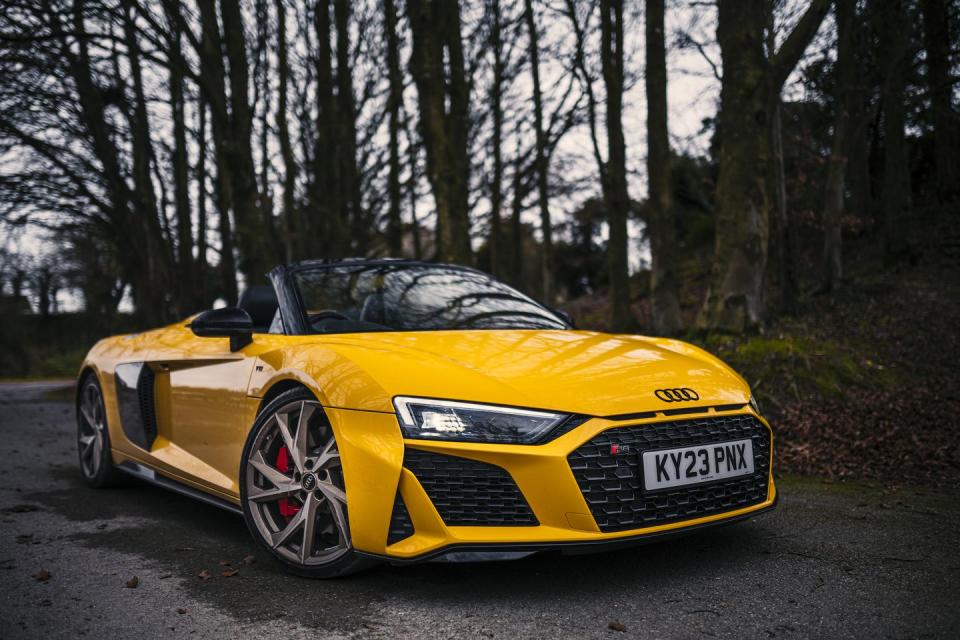
The speed of progress at the sharp end of the supercar sector has turned the pared-back R8 performance into something close to a minimalist masterpiece. The RWD rides on passive dampers rather than active ones, sends power to its rear wheel through a conventional limited-slip differential rather than an electronically controlled one and brakes with cast iron rather than composite discs. Together it all serves as a reminder that clever technology doesn’t increase charisma. The R8 really doesn’t need anything beyond its V-10 to feel truly special.
There won’t be a direct replacement. Audi has hinted there may well be a fully electric sportscar in the brand’s future, but there won’t be another powered by a combustion engine. Even if there was, it couldn’t be another V-10. Tightening emissions standards mean the days of naturally aspirated screamers are growing very short; Lamborghini will be moving the Huracan’s replacement to a turbocharged, hybridized V-8.
The R8 was always hard to categorize, but easy to love.

A car-lover’s community for ultimate access & unrivaled experiences.JOIN NOW Hearst Owned
You Might Also Like

 Yahoo Autos
Yahoo Autos 